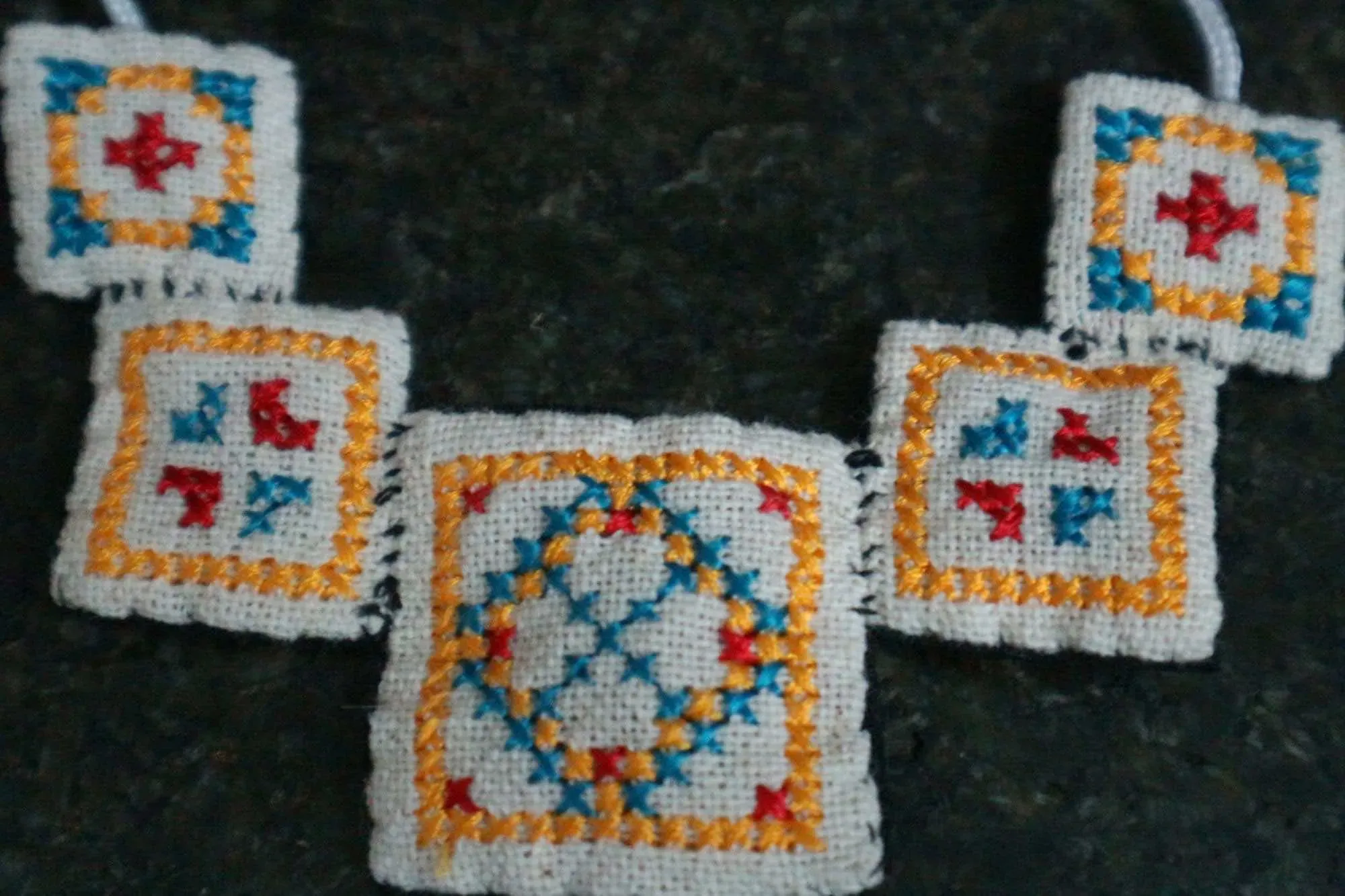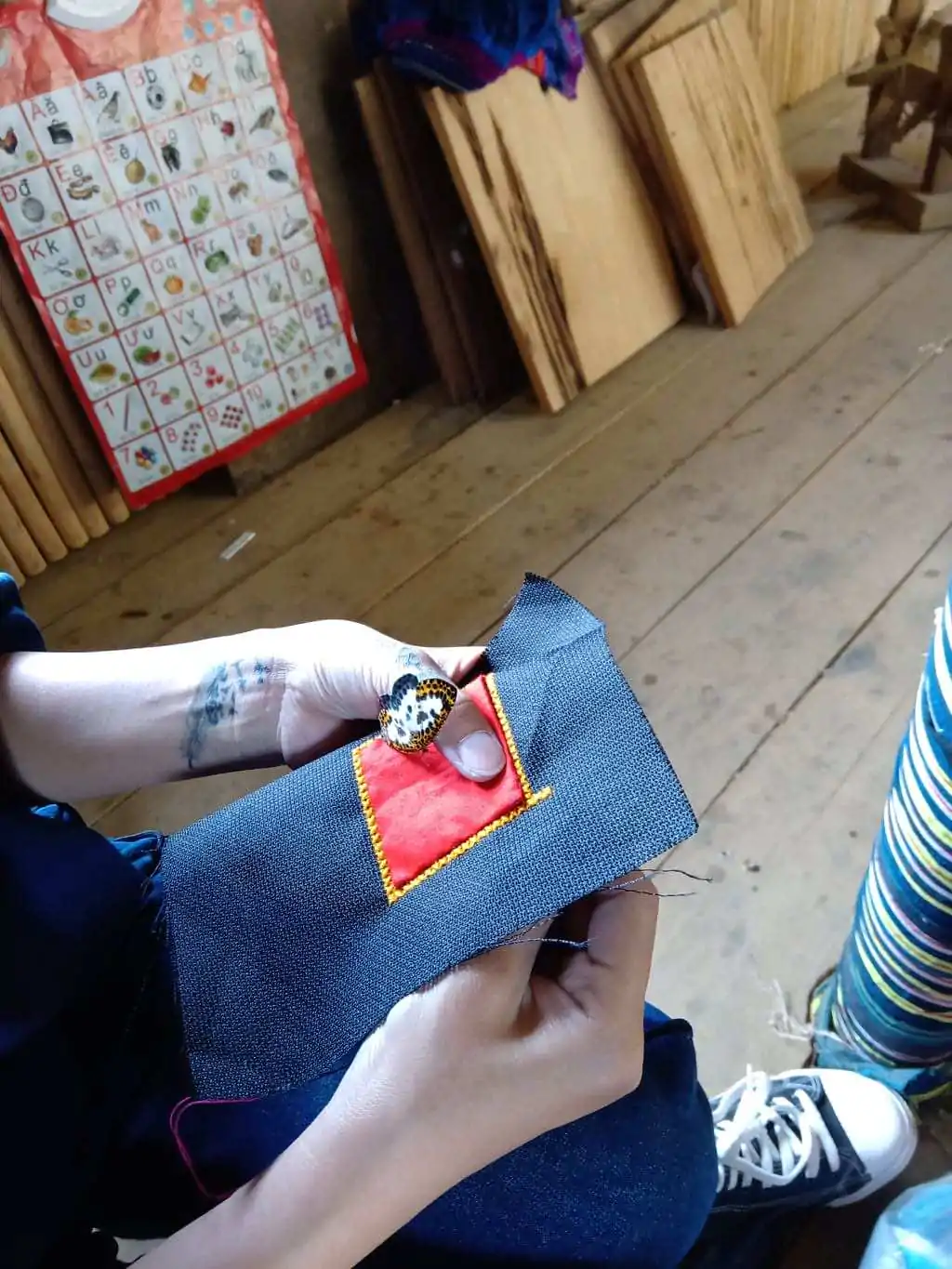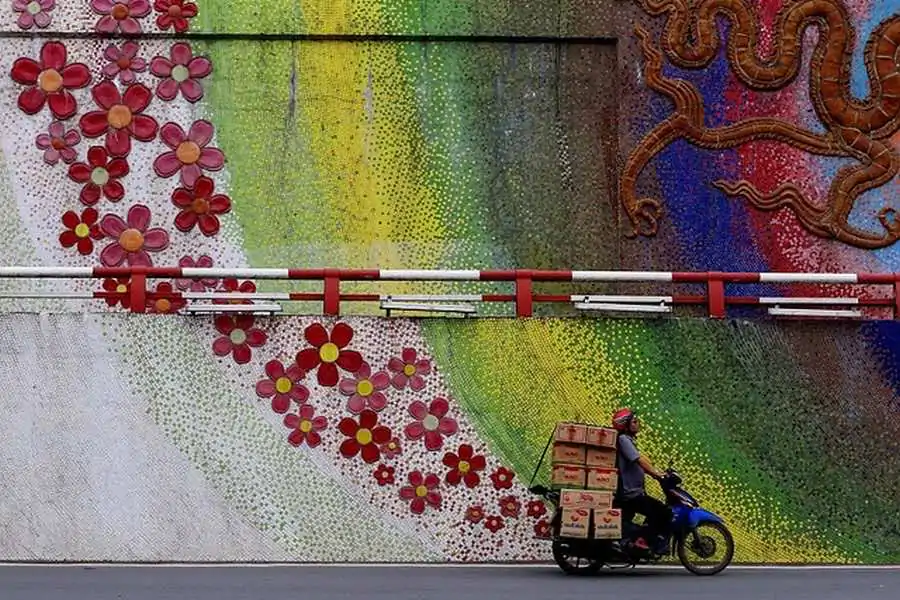It can be stated that ornaments are the key factor to decide the artistry of the H’Mong costume. Apart from batik, H’Mong women has one more significant technique to create colorful patterns on their clothes which is embroidery.
If batik has to be done before the dyeing, embroidery need to be done afterwards. A pattern will be made separately and sewn into the clothes. Embroidery doesn’t require a stove but a tiny sewing kit and almost every H’Mong woman doesn’t get out of the house without it in her pocket. Due to the flexibility, the H’Mong women manage to do this in between other works. Walking around the ethnic markets, it’s not hard to see a lot of women busy sewing on the small pieces of fabrics meanwhile keeping an eyes on their vendors.
Ornaments in the spiritual life

In ancient times, when Hmong people haven’t used the written language as now, their language was made up of picture symbols. For that reason, motifs are not only decorations but also the meaningful messages. They believe that ornaments on clothes as well as carvings on furniture are a way for human-beings to communicate with holy spirits. If the holy spirits see those, they will come to the house and give good fortune and dispel evils at the same time.
The motifs

All the patterns represent the imagination of ethnic people, hence they are quite rustic and simple yet perfectly depicts their connection with the nature. Some are deeply rooted in fairytales and folklores, some are inspired by the natural landscape where the H’Mong inhabited such as trees, animals and agricultural goods. The common ones being used are squares, crosses, circle, triangle.. And from those, the Hmong people bring the vibrancy of the daily life into their costumes.
Buffaloes have been intimately associated with daily activities of Vietnamese farmers in general and H’Mong people in particular. Therefore buffalo horns motifs are often embroidered on costumes as a way to remind people of the importance of this animal. In the picture you can see 4 pairs of buffalo horns at the 4 edges of the inner squares. Other than that, butterflies, snails, lilacs are often chosen to blow some of the life breath into the costumes. It’s safe to say that the H’Mong people literally “wear their heart on their sleeve”.
Stich lines

A butterfly also wants to take part in
If batik is all about controlling the temperature of wax, the lining of stitches is all it takes in embroidery. First, a piece of fabric will be chosen as the base color. These colors are normally blue or red, with stitches in black, white, yellow and cyan blue. The square piece has to be sewn into the main fabric with the stiches being exquisitely hidden. Using their fingers, the Hmong women will fold the piece along with the line they plan to design. When it comes to batik, people start with the inner first, then broaden further. But with embroidery, they prefer to start with the bigger parts first, then the little details at the end.
It’s not an overstatement to say that the Hmong costumes are adding a lot of shades to the colorful mountain areas. If you’ve ever been in one of the ethnic markets or festivals, you’ll know what we meant. Not only clothes, Hmong women truly insert those traditional motifs on everything in their life such as hats, belts, baby carriers, aprons.
At the end of the day, if the Hmong people like you, they’ll give you some separate patterns as a gift to sew into our clothes. And it’s surprisingly interesting that it goes so well with our casual outfits.
 Editor team
Editor team September 30, 2019
September 30, 2019 Travel Guide
Travel Guide
 1060
1060 YOU MAY ALSO LIKE
YOU MAY ALSO LIKE
 read more
read more
